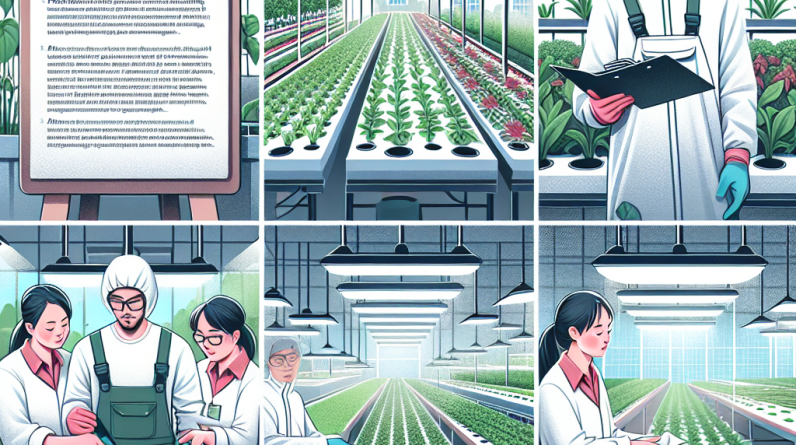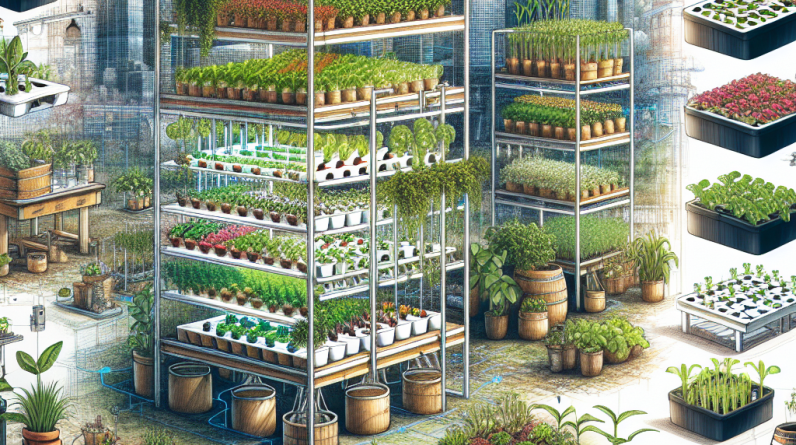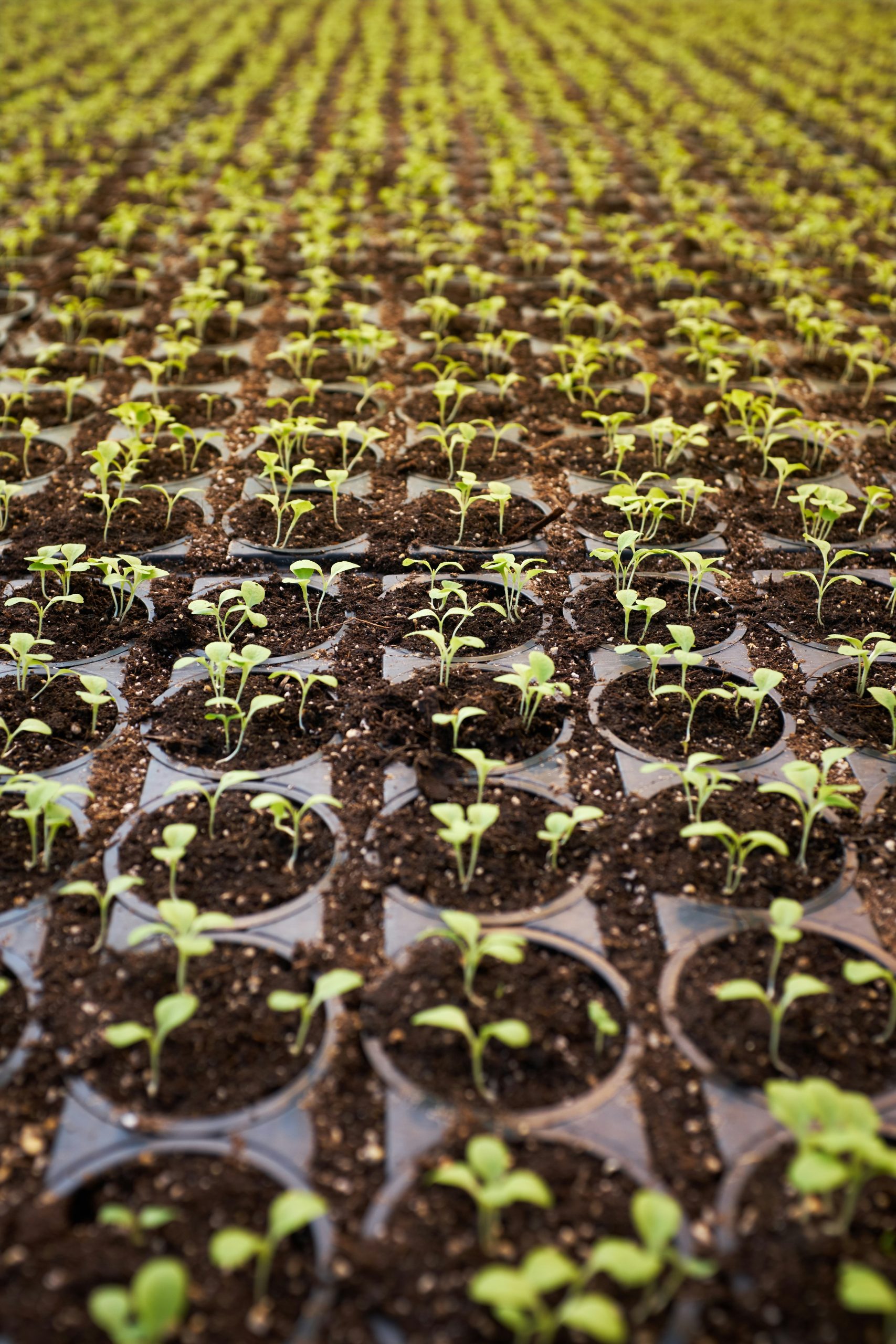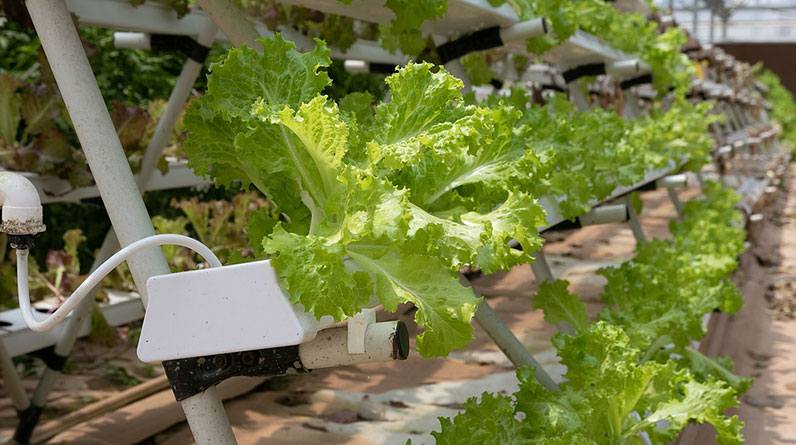
1. Understanding Hydroponics and CSA
What is Hydroponics?
Hydroponics is a method of growing plants without soil, instead, they rely on a nutrient-rich water solution. This technique allows for more control over the growing conditions, leading to potentially higher yields and faster plant growth. Trust me, once you dive in, you’ll see how exciting it can be to watch plants flourish without traditional soil!
There are various systems out there—like NFT (Nutrient Film Technique), Deep Water Culture, and aeroponics. Each has its perks, but the common thread is that they all optimize moisture and nutrient delivery directly to the roots. Once I figured this out, my gardening game changed forever!
This method also comes with a lot of sustainability benefits, like using less water and fertilizers compared to traditional farming. You become a part of a growing movement focusing on eco-friendly practices, which feels pretty awesome. I mean, who doesn’t want to save the planet while growing delicious veggies?
What is Community-Supported Agriculture (CSA)?
Community-Supported Agriculture, or CSA, is a system where consumers buy shares of a farm’s harvest in advance. This builds a direct connection between farmers and the community, providing fresh, locally-grown produce. I love that it nurtures relationships and ensures that everyone is invested in the success of the farm!
The beauty of a CSA is that it doesn’t just benefit the farmer; customers get to enjoy fresh, seasonal produce directly from the farm, often at a better price than grocery stores. Plus, they often get a taste of varieties that they wouldn’t usually pick up off the shelf. It’s a win-win, right?
It’s not just about food; you create a community around your CSA. Share recipes, organize events, and build a loyal customer base that cares about where their food comes from. That kind of connection is something you can’t put a price on. Every time I see a family pick up their CSA box and smile, I know I’m doing something right.
The Intersection of Hydroponics and CSA
Imagine combining these two powerful concepts! Starting a Hydroponic CSA can revolutionize your farming business while promoting community engagement. You’re essentially giving your community the chance to be part of something fresh and innovative.
By growing hydroponically for your CSA, you can offer produce that is typically harder to find, like exotic herbs or greens that thrive in a controlled environment. This diversity can attract more subscribers looking for unique offerings!
Moreover, since hydroponics often yields more produce in a shorter period, you can provide larger shares and maybe even regular updates on growth. Engaging your members through newsletters or social media about the crops keeps excitement high, building anticipation for every delivery.
2. Setting Up Your Hydroponics System
Choosing the Right System
The first step to setting up your hydroponic CSA is selecting an appropriate system. You might be drawn to the simplicity of Deep Water Culture or the efficiency of a Nutrient Film Technique setup. Personally, I found Vertical Farming to be a game changer. It’s space-efficient and looks super cool!
Consider factors like the space you have available, the types of crops you want to grow, and your budget. That’s crucial because some setups can get pricey, especially when you factor in lighting and nutrient systems.
Do some research! There’s a flood of information on various systems online, and communities full of hydroponic enthusiasts willing to share their experiences. I joined a few forums and learned from seasoned growers, which was invaluable in honing my system choice.
Building Your Hydroponic System
Once you’ve chosen your system, it’s time to assemble it. Depending on the complexity, some people buy pre-made kits, while others prefer DIY systems. I loved actually building my own! It made me feel like a true creator—and a little bit of a mad scientist, too!
Ensure you have everything you need; the lighting, pumps, and nutrient solutions can feel overwhelming at first, but once you get it set up, it’s incredibly satisfying. I remember the first time I saw my seedlings start to grow—it was like magic!
Make sure to monitor the environment closely, adjusting temperatures and light cycles as needed. Hydroponics is a hands-on endeavor, so being present is key to success. Plus, the more you tinker, the more you’ll discover what works best for you.
Choosing Your Crops
Choosing what to grow can be both thrilling and a little daunting. When I first started, I went for tried-and-true favorites like lettuce and basil. However, I quickly ventured into more diverse crops—like kale and mint! Playing around with different varieties keeps things interesting.
Research what your local community craves. Engaging in conversations with your potential CSA members can provide great insights. I once did a quick survey among friends, and it guided my crop choices significantly.
Also, think about crop rotation and seasonal availability to maximize your produce output. Keeping a diverse garden also mitigates risks related to pest infestations or market fluctuations. Remember, it’s all about keeping your CSA exciting and fresh!
3. Marketing Your Hydroponic CSA
Branding Your CSA
Your CSA needs a catchy name and an appealing brand. Think of something that resonates with the community and represents the freshness of your products. A few brainstorming sessions with friends can spark brilliant ideas! When I landed on “Green Leaf Collective,” the energy in the room shifted. It just clicked!
Creating a logo is also important. Use tools like Canva to design something eye-catching. Trust me; having a professional appearance builds credibility. And let’s be real, it just feels good to have something branded that you can show off!
Once your brand is set, make sure to maintain consistency in your messaging across platforms. Your ideal customers will be drawn to your story and how you communicate your passion for hydroponic farming. This connection will help them feel a personal investment in your CSA.
Utilizing Social Media
Social media can be a powerful tool for promoting your CSA. Create accounts, share beautiful photos of your plants, or post videos of your hydroponics system in action. When I bought a simple ring light to enhance my product shots, engagement skyrocketed!
Don’t shy away from sharing behind-the-scenes content—people love seeing the hard work that goes into growing their food. It helps build trust and showcases your passion. Plus, you’ll find that people are eager to join when they see the love and effort firsthand!
Engage with potential members—answer questions, respond to comments, and even create polls to get feedback on what they want to see. This helps create a community atmosphere, which is vital for your CSA’s success. Get to know your audience; they’ll love you for it!
Creating a Subscription Model
Your CSA would benefit from a structured subscription model that provides clear options for members. Will they receive a weekly box, or are you offering options for bi-weekly shares? Settle on a fair price that reflects the value you’re providing but also keeps things affordable.
Consider tiered membership levels. I found that offering multiple subscription sizes appealed to a broader audience, from families to college students. It’s a nice feeling knowing you can cater to different needs while still promoting local produce.
Ensure to communicate what your members are getting ahead of time. When they understand the value, they’re more likely to commit. Plus, sending out updates when compartments are available keeps everyone excited for their next delivery!
4. Managing Your Hydroponic CSA
Record Keeping and Harvest Tracking
Keeping meticulous records is crucial for any farming venture. Start by documenting the setup of your hydroponic system and tracking the growth of your crops. I regularly use spreadsheets to keep up with nutrient levels, growth rates, and harvest times.
Tracking your harvests not only helps plan future crops but also lets you provide accurate reports to your CSA members about what they can expect. This transparency builds trust, making your members feel included in the process.
Embrace technology! There are plenty of apps and software options to help simplify record-keeping. I started using a garden management app, and it really transformed how I organized my growing process.
Communicating with Members
Open communication with your CSA members creates an engaged and loyal customer base. Develop a newsletter to send updates, harvest schedules, and fun recipes that utilize your produce. I love crafting playful content that keeps readers looking forward to their next email!
Social platforms are also your friend! Host live Q&A sessions, share gardening tips, or even do some mini-tours of your hydroponic setup. This personal touch goes a long way in fostering relationships.
Be honest about challenges you face in hydroponic farming. Sharing the ups and downs creates a sense of kinship with your members. They appreciate seeing that you’re just as invested in this process as they are.
Sustaining Your CSA Community
To keep your CSA thriving, consider hosting events or workshops to build connections. I initiated a seasonal barbecue where members could gather, enjoy food, and learn about different plants. It was a hit and made subscribers feel part of something bigger!
Creating seasonal experiences helps solidify loyalty. Consider launching seasonal share boxes or themed weeks—like “Herb Week” or “Salad Week.” Introducing variety keeps excitement alive, and I can assure you it makes organizing deliveries more fun!
Lastly, consistently gather feedback through surveys or casual conversations. Understanding what members love and what they want to change allows you to adapt and grow your CSA over time. Everyone feels valued when they know their opinions matter!
5. Navigating Challenges in Hydroponic CSA
Dealing with Pests and Diseases
Pest management can be a real concern in hydroponics. However, the closed environment can actually help you monitor and address issues earlier than traditional farming. I always keep a close eye out for signs of distress in my plants.
Employ integrated pest management strategies—like beneficial insects or organic treatments—to mitigate pest issues. Share your experiences with other growers in your community, because learning from each other can come in handy during tough times!
Remember to maintain a clean environment in your hydroponics setup as well. Regularly checking everything can help prevent diseases from taking root before they can wreak havoc on your crops.
Weather Considerations
While hydroponics gives you more control, you still need to consider external weather conditions and their impact. When setting up, ensure your system is adequately insulated against extreme temperatures, and have backup plans for electricity outages.
Consider investing in a generator as a backup. I learned the hard way! Losing power for even a few hours can be damaging, so having a contingency plan is key to safeguarding your plants.
Staying informed about local forecasts helps you prepare for any potential impacts from extreme weather changes. Being proactive—rather than reactive—can save you a lot of trouble down the line.
Managing Expectations
Starting any farming initiative is a marathon, not a sprint! Understand that setbacks can happen. I’ve certainly had my share of crops that didn’t go as planned, but patience and perseverance are vital. Communicating with your members about these challenges can bring them closer to your mission.
Accountability matters! When I fall short, I always reach out to my members and explain what happened. They appreciate the honesty, and most are incredibly understanding. It’s all part of the journey together!
Fostering a sense of community where everyone shares in the victories and defeats creates a richer experience for both you and your subscribers. Celebrate the wins, learn from the losses, and keep pushing forward!
FAQs
1. What are the main benefits of a hydroponic CSA?
A hydroponic CSA offers fresh, locally grown produce while supporting sustainable farming practices. It promotes community engagement and ensures that customers directly benefit from the farmer’s work. Plus, you can grow unique crops that might not be available in standard grocery stores!
2. How much space do I need to start a hydroponic CSA?
The space you need can vary greatly depending on the system you choose and the number of members you want to accommodate. You could start small—perhaps in a garage or backyard—and expand based on demand. Flexibility is key!
3. What challenges might I face when starting a hydroponic CSA?
Common challenges include pest management, ensuring consistent growth, and maintaining communication with members. However, with careful planning and a community-focused mindset, many of these challenges can be effectively managed.
4. Can I grow a variety of crops in a hydroponic CSA?
Absolutely! Hydroponics allows for a wide range of crops, from leafy greens to herbs, and even fruits. The key is to experiment and find what works best for your system and your community’s preferences.
5. How do I price my CSA shares?
Pricing should reflect the value of your produce as well as the cost of your hydroponic system and operational expenses. Research other local CSAs and consider tiered pricing for different share sizes—this allows you to cater to different budgets while also attracting more customers!







